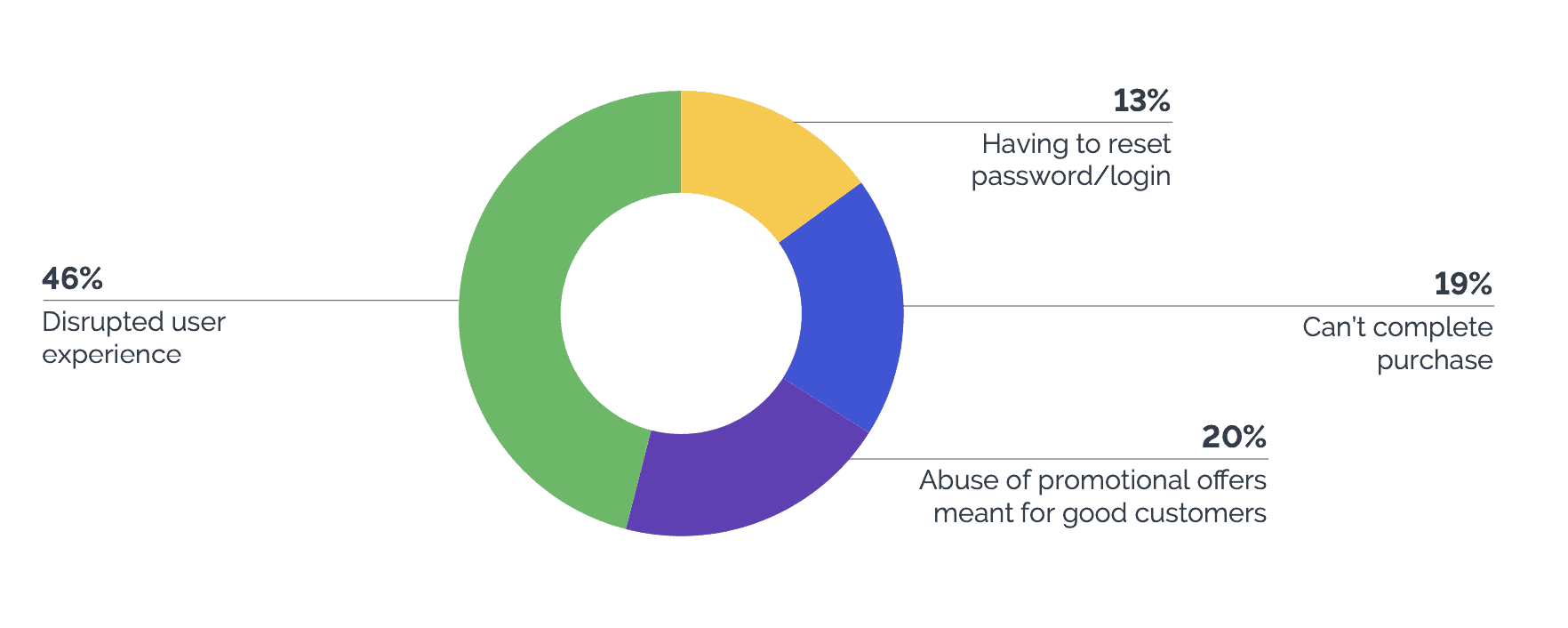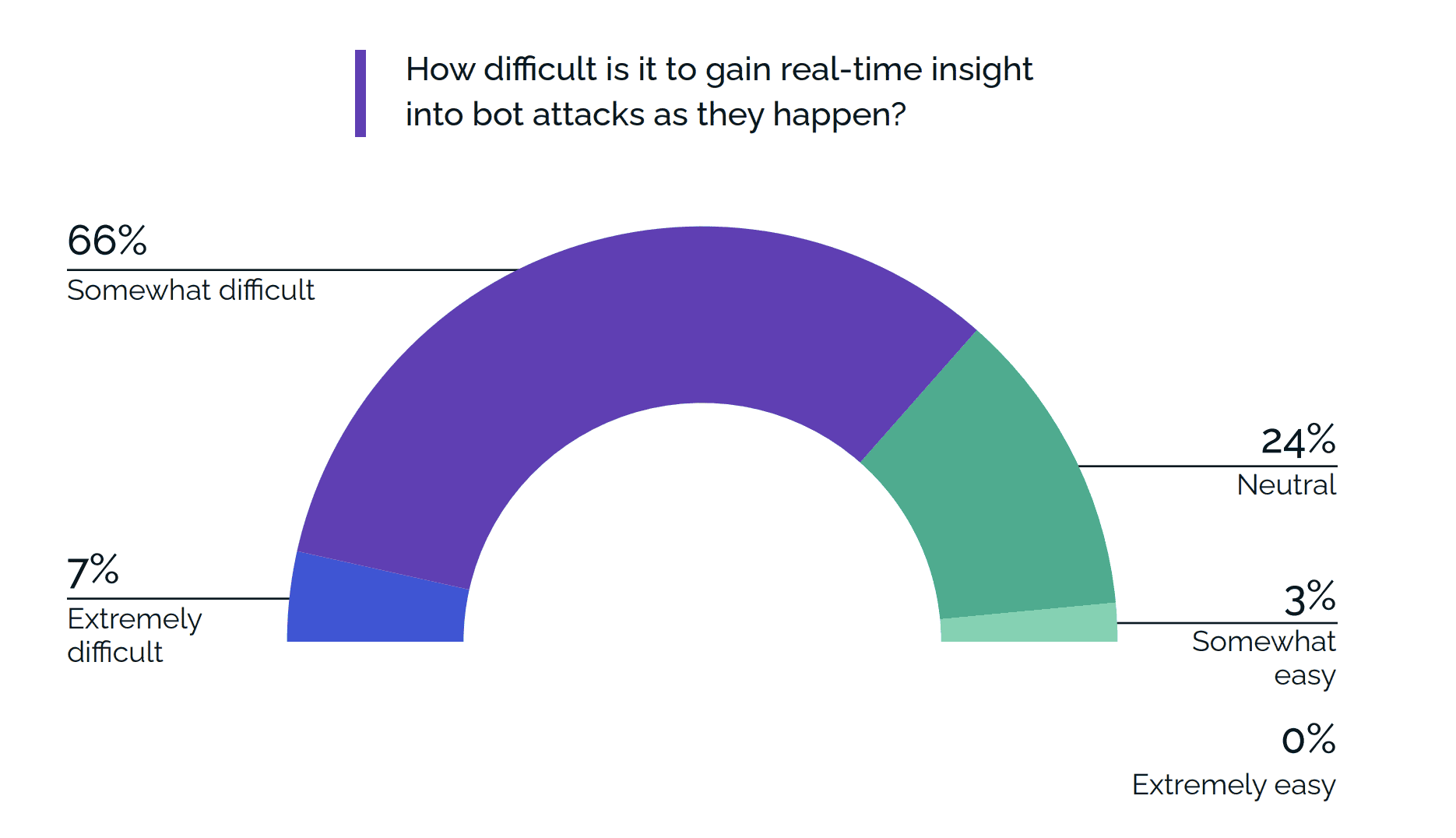Have you ever encountered a website asking you to solve a puzzle before completing a purchase or logging into an account to prove you are not a robot? That's an anti-bot measure in action. But, why is there a need for websites to use them? An anti-bot is a security measure that is put in place to stop bots from accessing and interacting with websites or launching bot attacks. Automated bad bots can cause damage to a website by constantly scraping data, injecting spam or malware, sending phishing (social engineering) emails, or even launching distributed denial of service (DDoS attacks) and credential stuffing attacks. Here are some common business impacts related to bot attacks from Arkose Labs research:

What Is An Anti-Bot?
An anti-bot refers to a technology that prevents malicious bots from accessing and infiltrating a system, for instance a user account, a business’ server, or other critical infrastructure. As bots and botnets can be utilized to conduct various automated attacks, it is more important than ever for businesses to implement an anti-bot solution. An anti-bot system uses machine learning algorithms that helps in detecting and blocking bots from gaining, even through brute force, unauthorized access.
As more businesses continue providing a digital-first experience for consumers, anti-bot verification is a crucial part of a comprehensive anti-bot solution. It ensures that human users are not falsely flagged as bots while allowing the system to be protected from malicious bots. It is important to note that bots can either be helpful or malicious computer programs. Anti-bot technology helps to ensure that only the beneficial ones, or legitimate human users, can operate and conduct their business.
How Does an Anti-Bot Work?
Advanced anti-bot solutions work by leveraging the power of algorithms, machine learning, and AI to detect and categorize bot traffic in real time and prevent cyberattacks. These solutions use various methodologies like device fingerprinting, turing tests (CAPTCHAs), and user behavior analysis, to uncover malicious bot behavior. Bot detection is used to analyze all traffic to websites, mobile applications, and APIs to detect and block bad bots.
Blocking bad bots is necessary to prevent cybercrime, fraud, data protection issues, content scraping, content piracy, account takeovers (ATO),credential stuffing, and other malicious activities. Many anti-bot solutions have worked to ensure that legitimate human users and customers are not negatively impacted by the bot detection process, but it is important to note that not all solutions are created equal.
Understanding the benefits of anti-bot technology
One of the key benefits of anti-bot solutions is that they ensure zero false positives, meaning that no legitimate user is penalized. Bot management technologies can accurately assess bots and block malicious activity while allowing legitimate bots to operate uninterrupted. In addition, cybersecurity controls can help prevent bots and botnets from wreaking havoc on IoT networks and securing sensitive information, like customer credit card numbers and login credentials, like email addresses and passwords.The result of a data breach due to a bot attack can be incredibly damaging to a businesses’ reputation and bottom line. Anti-bot technology also can provide insights into bot attacks in real time, which can be difficult based on the solution.

Implementing CAPTCHAs and other forms of verification
There are several types of anti-bots available to businesses and websites looking to prevent bot attacks. One of the more popular options is CAPTCHAs, which require users to complete a challenge before they can access a website or application. This can include typing in distorted text or clicking on specific images. Other forms of verification can also be implemented, such as two-factor authentication, which requires users to provide an additional piece of information to prove their identity.
Automatically flagging suspicious activity
To effectively detect bots, it's important to check for irregular or anomalous spikes in traffic, the contribution of a channel to new sessions and users, and an increase in activity, like multiple login attempts, from a remote location. Some anti-bot solutions automatically block users from specific geographic locations, called geofencing. However, as more attackers can spoof their IP addresses and locations, geofencing can be an inelegant solution to a problem and harm the customer experience.
Arkose Labs’ anti-bot keeps businesses secure
While implementing an anti-bot solution is imperative to keep businesses and their customers secure from malicious activities, not all anti-bot solutions are created equal. For instance, many traditional CAPTCHAs can easily be bypassed by today’s modern and advanced bots and botnets, giving them easy access to steal personal data. Further, legacy CAPTCHAs are not able to differentiate between non-human and human users. This means that legitimate human users and customers will be faced with frustrating challenges that are difficult to complete. This harms the user experience as many customers want a frictionless online experience.
Arkose Labs, on the other hand, provides a comprehensive anti-bot solution, backed by analytics, that effectively detects and mitigates the threat posed by malicious bots. Arkose Labs fields variable MatchKey challenges that are designed to meet modern threats head-on by providing the best of defensibility, usability, and accessibility in one product. In fact, Arkose MatchKey is the strongest CAPTCHA ever made. Better yet, while bots are stopped at front door endpoints, many legitimate users and good bots will experience little to no friction at all, which improves the user experience.
If you would like to learn more about how Arkose Labs can help to secure your business from malicious bots, without harming the user experience, book a demo with us today.







